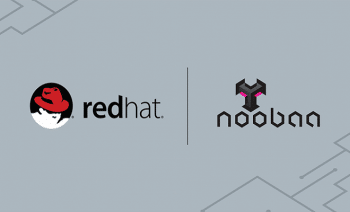Acquisition of NooBaa will help Red Hat’s existing portfolio of hybrid cloud offerings and advance Red Hat’s position as a leading provider of open hybrid cloud technologies

Red Hat, Inc., a global leading provider of open source solutions, has acquired NooBaa, an early stage company developing software for managing data storage services across hybrid and multicloud environments.
Ranga Rangachari, vice president and general manager, Storage and Hyperconverged Infrastructure, Red Hat said – “Data portability is a key imperative for organizations building and deploying cloud-native applications across private and multiple clouds. NooBaa’s technologies will augment our portfolio and strengthen our ability to meet the needs of developers in today’s hybrid and multicloud world. We are thrilled to welcome a technical team of nine to the Red Hat family as we work together to further solidify Red Hat as a leading provider of open hybrid cloud technologies.”
Innovative Data Management Technology
NooBaa is known for its innovative data management technology, where they collapse multiple storage silos into a single, scalable storage fabric. Acquisition of NooBaa will help Red Hat’s existing portfolio of hybrid cloud offerings and advance Red Hat’s position as a leading provider of open hybrid cloud technologies.
Red Hat said in the release – “NooBaa’s technologies complement and enhance Red Hat’s portfolio of hybrid cloud technologies, including Red Hat OpenShift Container Platform, Red Hat OpenShift Container Storage and Red Hat Ceph Storage. Together, these technologies are designed to provide users with a set of powerful, consistent and cohesive capabilities for managing application, compute, storage and data resources across public and private infrastructures.”
NooBaa’s code is not open sourced yet. But soon Red Hat is planning to open source NooBaa’s technology, though the exact timeline has yet to be determined.
About NooBaa
NooBaa was founded in 2013 to address the need for greater visibility and control over unstructured data spread throughout these distributed environments. To achieve this, the company developed a data platform designed to serve as an abstraction layer over existing storage infrastructure. This abstraction not only enables data portability from one cloud to another, but allows users to manage data stored in multiple locations as a single, coherent data set that an application can interact with.








































































